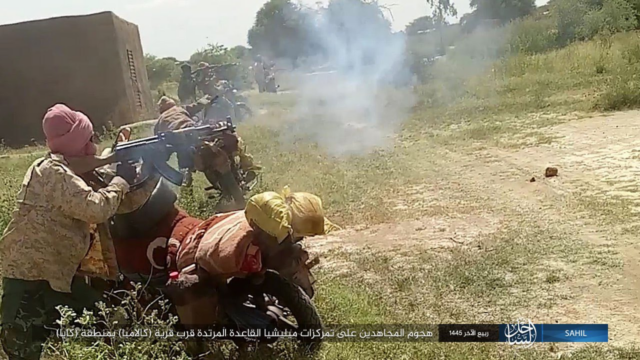
Brief: Window of Opportunity for Peace Between ISGS and JNIM Closes
Publication: Terrorism Monitor Volume: 21 Issue: 22
By:

In March, the new al-Qaeda in the Islamic Maghreb (AQIM) leader, Abu Obeida Youssef al-Aanabi, affirmed that Islamic State in Greater Sahara (ISGS) is “deviant,” emphasizing that AQIM was still at war with ISGS (France24.com, March 6). In August, there were emerging signs of a possible truce between JNIM and ISGS, despite renewed JNIM–AQIM clashes in border regions of Niger, Burkina Faso, and Mali. These occurred amid the pending withdrawal of United Nations Multidimensional Integrated Stabilization Mission in Mali (MINUSMA) troops from northern Mali. The truce was proposed by a new group, Jamaat Wahdat al-Muslimin (Group for the Unity of Muslims), which sought to unite jihadists in al-Qaeda affiliate Group for Supporters of Islam and Muslims (JNIM) and ISGS for the purpose of combatting a greater threat—the “apostate” Sahelian governments (X/@MENASTREAM, August 24).
Nonetheless, any prospects for this group’s initial statement translating into an actual truce seem to have faded fast. For example, on November 3, Islamic State’s flagship magazine, al-Naba, highlighted how IS “soldiers” attacked the “apostate al-Qaeda militia” near Kalamba in the Centre-Nord Region of northern Burkina Faso (X/@p_vanostaeyen, November 3). This reaffirmed a similar claim posted on social media by IS regarding an ISGS attack on JNIM in the same village and ISGS’s execution of JNIM “spies” on October 20 (X/@Africarepor_t, October 20). Had a truce with JNIM been in the works, it is unlikely that ISGS would have put forth these claims about attacking JNIM.
If ISGS expects that it will overcome JNIM in their lethal competition, they may be in for a rude awakening. The key development in northern Mali in recent weeks has been MINUSMA’s withdrawal, which looks to benefit JNIM more than any other group. JNIM attacked a MINUSMA base in the northern Malian town of Aguelhok in Kidal Region, just after the multinational force withdrew (VOA Afrique, August 25). This allowed JNIM to pilfer and destroy weapons, ammunition, and vehicles before the Malian army assumed control of the base.
In addition, the hasty MINUSMA withdrawal only furthered tensions between the Malian army and MINUSMA. MINUSMA’s exit was accelerated because it feared preemptive attacks by JNIM—as well as the Malian coup leaders’ harsh stance against MINUSMA. As a result, the Malian army could not acquire MINUSMA’s weapons, further stoking the coup leaders’ anger against MINUSMA (Al Jazeera, November 7). This makes it unlikely any UN force will return to northern Mali if the country falls deeper into the spiral of jihadist violence. Likewise, the coup leaders scapegoated France, and the French are also unlikely to return so long as the Malian coup leaders remain in power.
The Malian army may believe it can compensate for the lack of MINUSMA or French support with Russian Wagner Group mercenaries. However, Wagner’s presence in the country has been too small to make an impact, and their presence is controversial because of reports of major Wagner human rights abuses. At a time when ISGS and JNIM attacks are on the rise, Mali appears to have no fallback plan to address the deteriorating security situation (HumAngle, August 18). If JNIM gains further control in its main area of operations in Kidal, where ISGS has less influence, JNIM will gain the upper hand against both ISGS and the Malian military.



